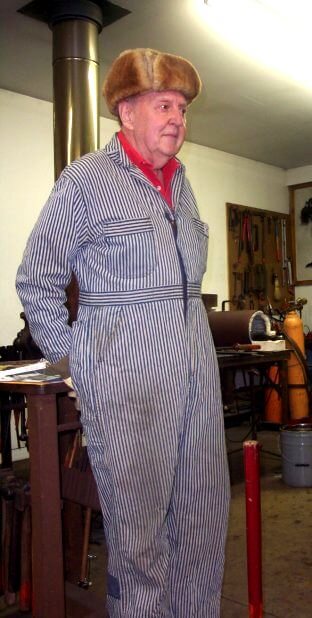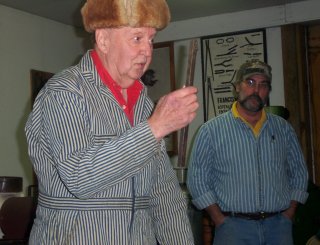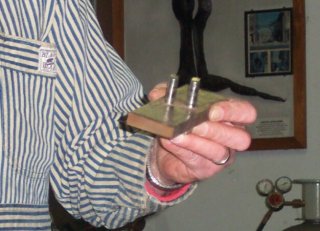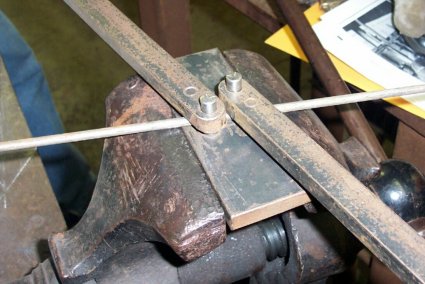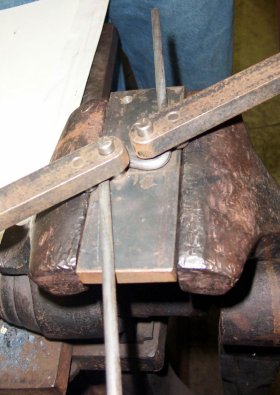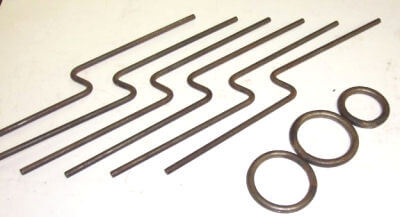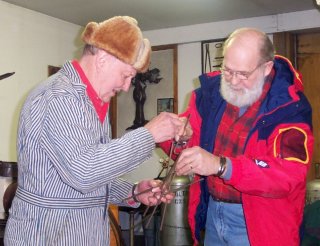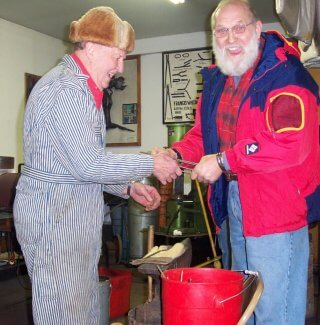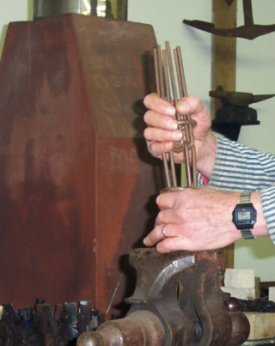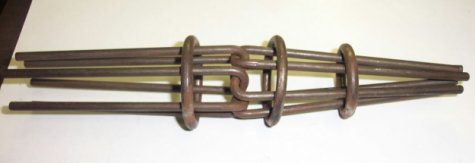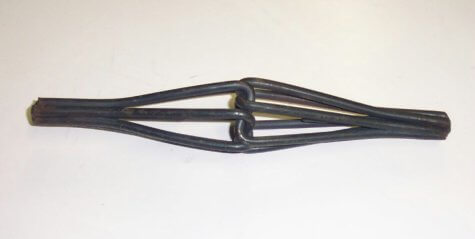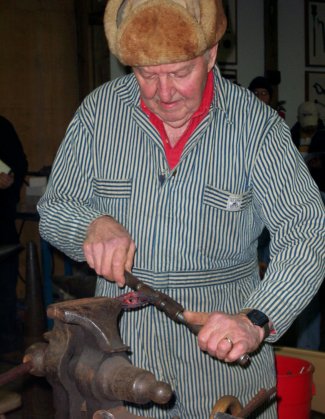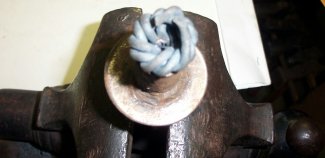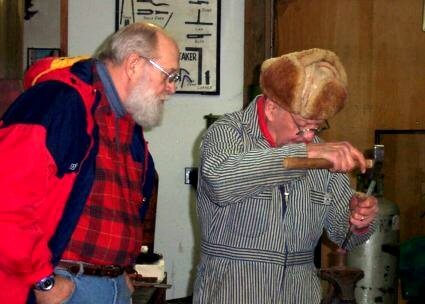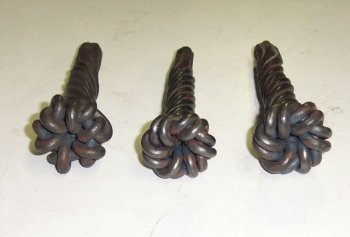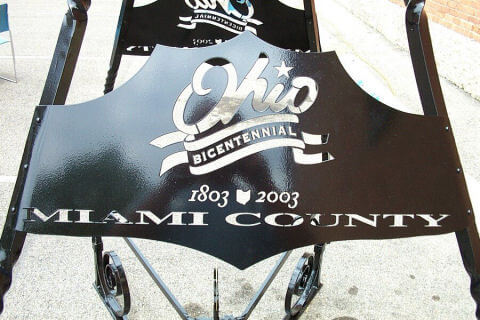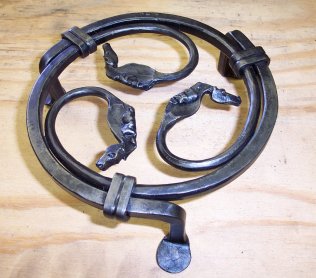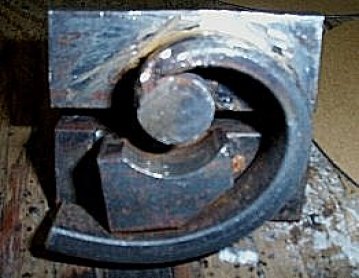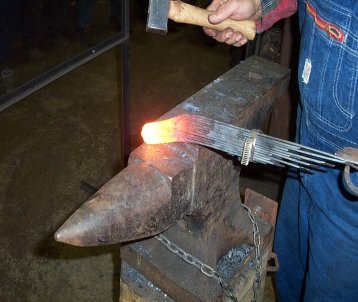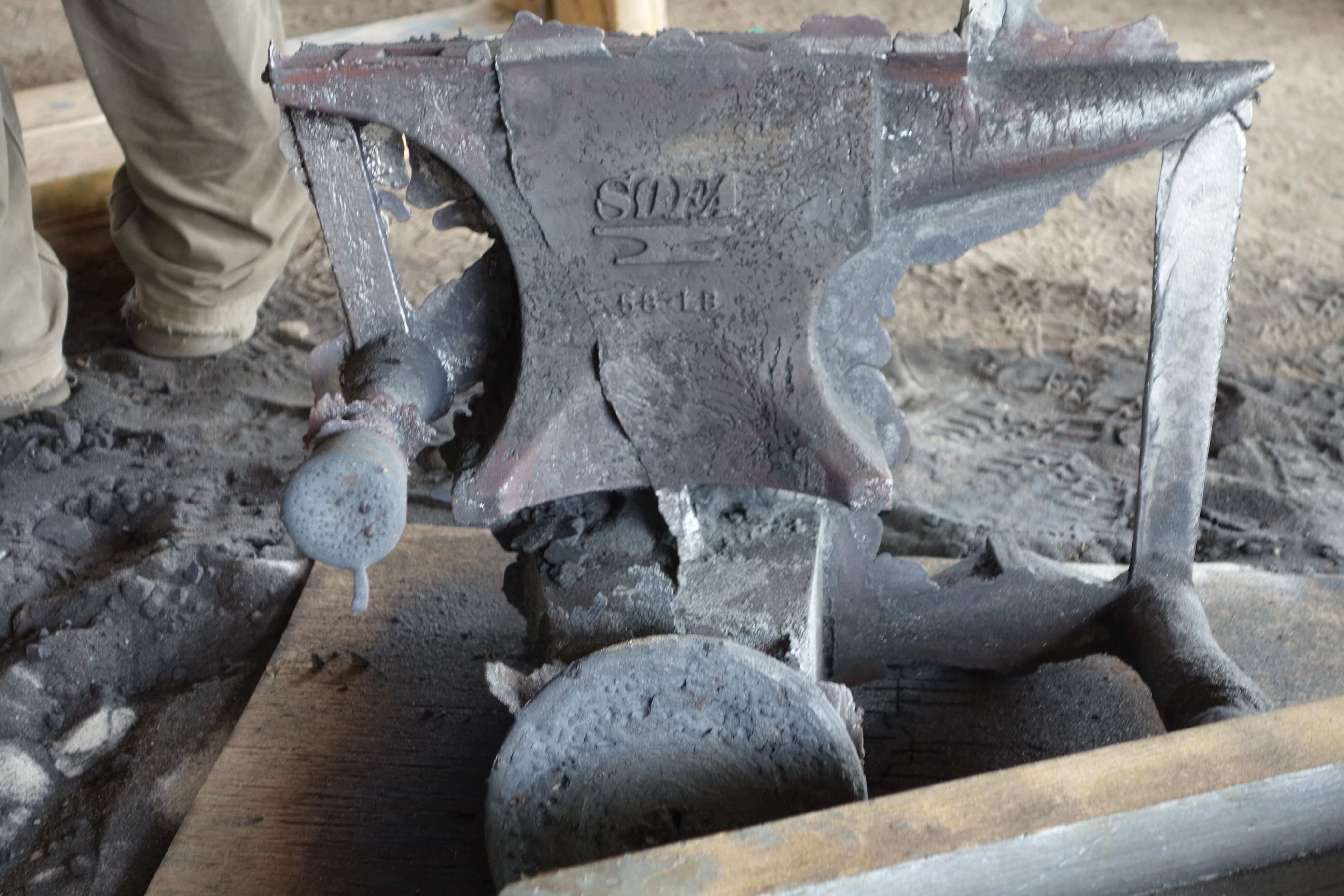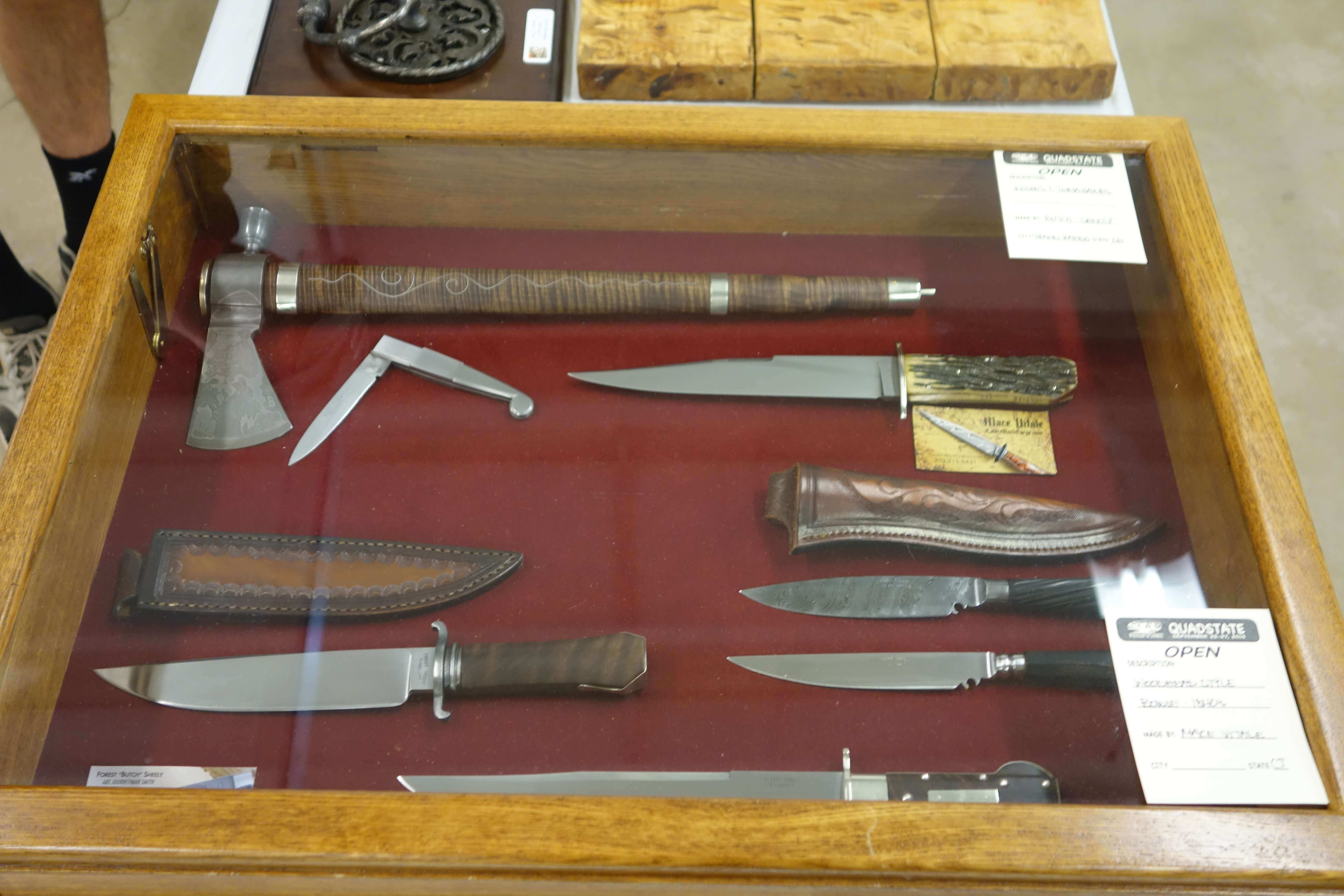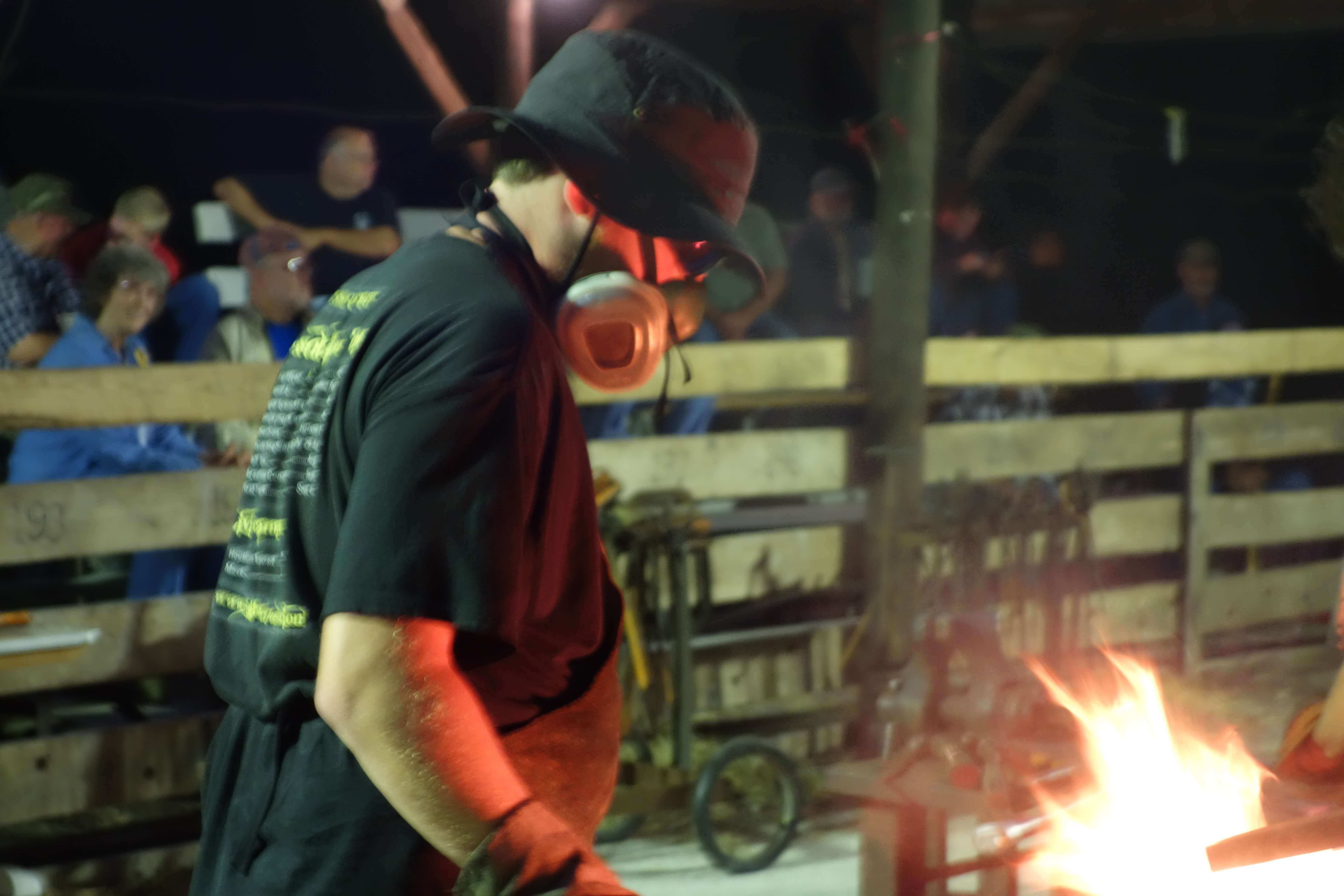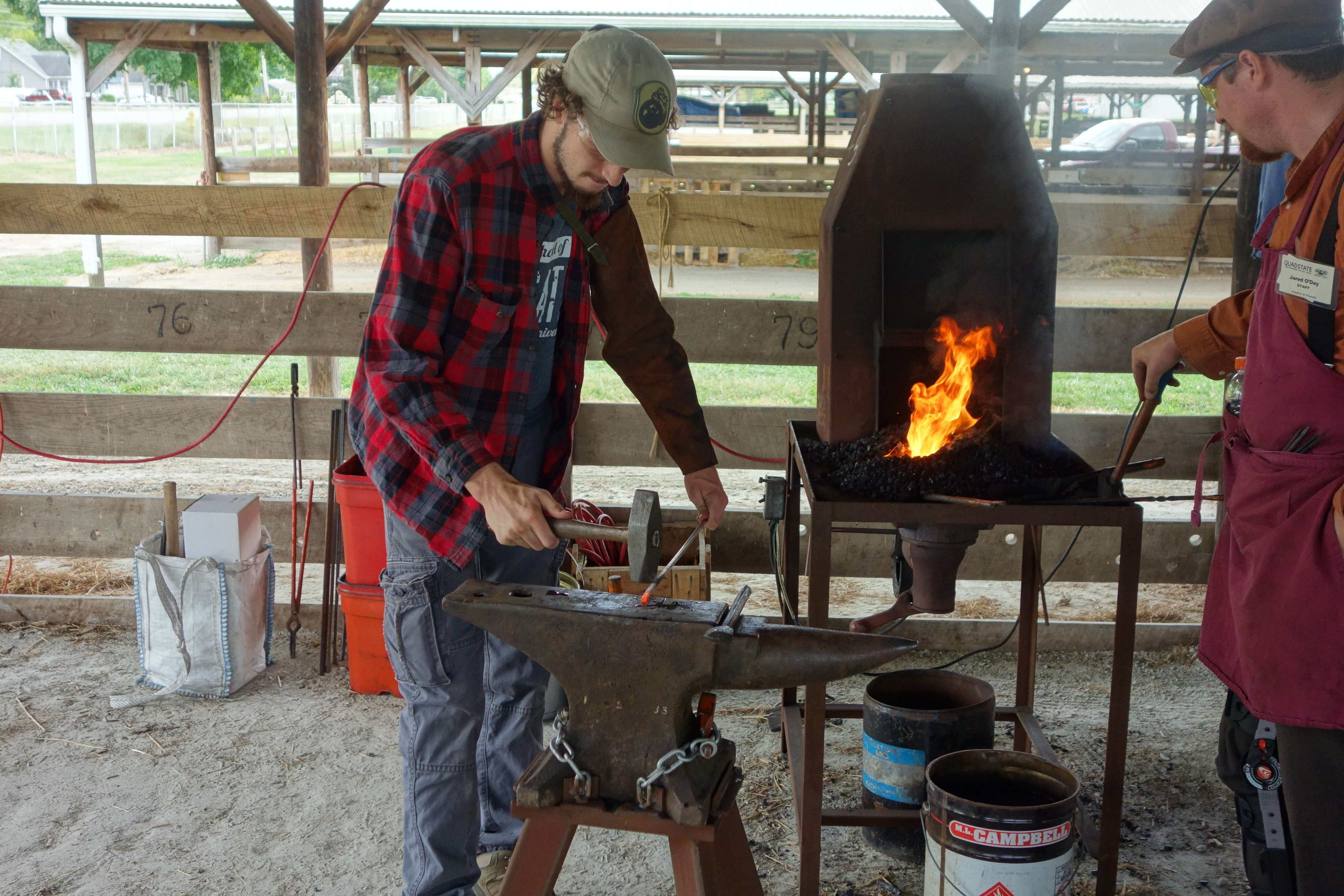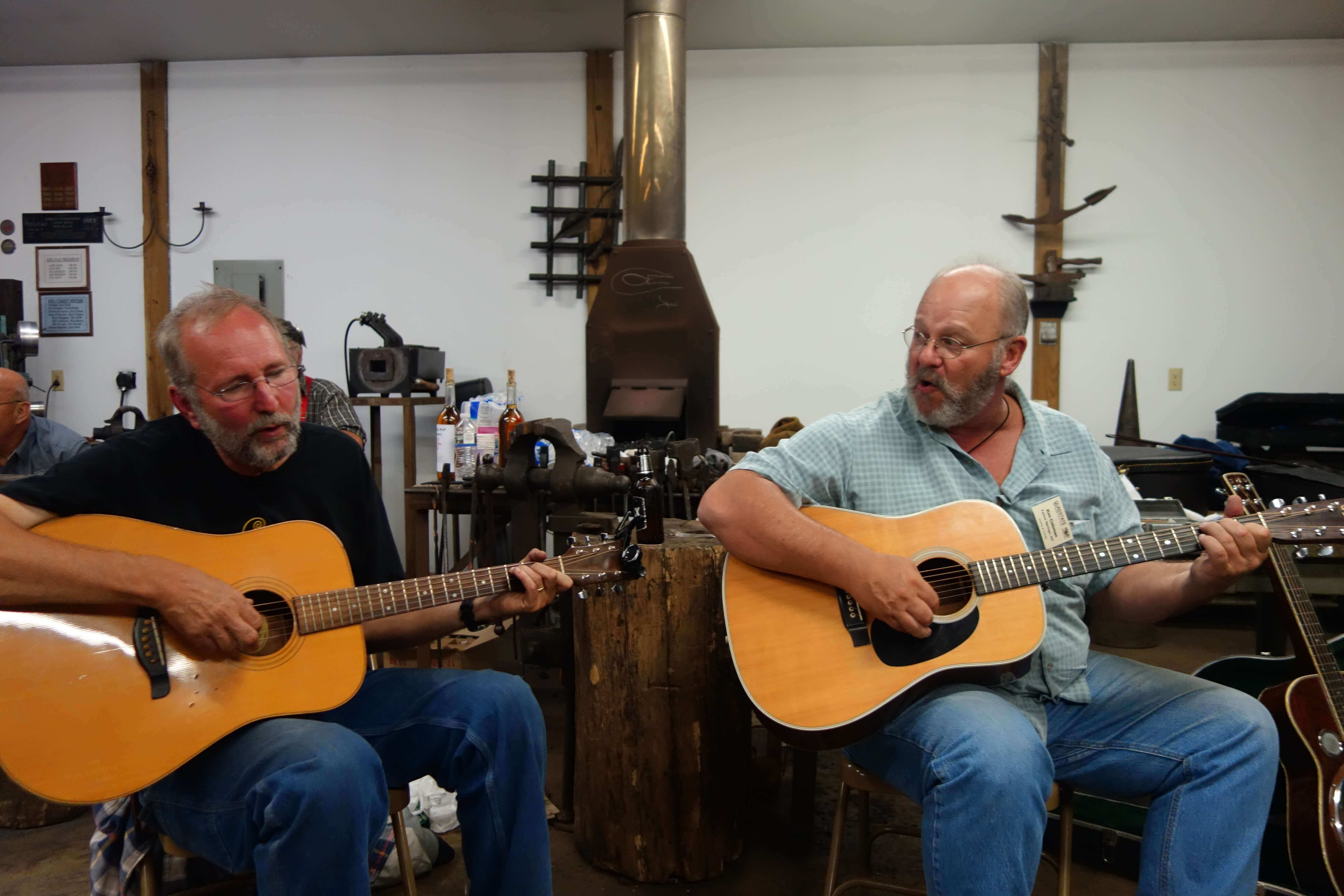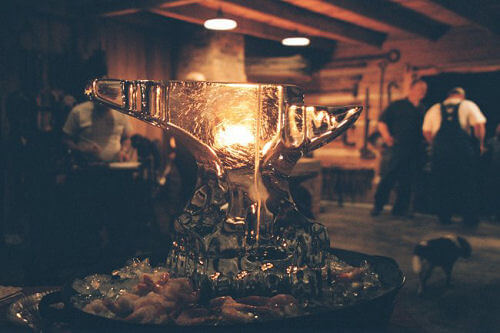HANS PEOT
New Carlisle, Ohio
BRIAN THOMPSON
Fairborn, Ohio
Hans Peot, a retired electrical engineer and former Assistant Program Director for the B-1 Bomber, is a master blacksmith and longtime SOFA supporter. Hans began blacksmithing in 1981 and has served as SOFA’s President and Secretary-Treasurer for a total of 18 years. He continues to support the club by serving as one of seven board members. Hans generously donated his time this past February (2007), on a very frigid Saturday afternoon, to demonstrate and give the history of the Clayton Knot. He and Brian Thompson also demonstrated how to slit and drift a hole in half-inch mild steel square stock.
Brian Thompson, a skilled welder, has been blacksmithing since 1985. He has been commissioned to design and build architectural pieces, including a gate for Corinth Presbyterian Church and a wraparound railing for the deck of a Dayton home. Brian is a long-standing member of SOFA, and he served as Quadstate Coordinator for seven years. He continues to support the club by serving as one of seven board members. Brian assisted Hans in the demonstration.
CLAYTON KNOT
Hans begins by explaining the history of the design of the Clayton Knot; then, he describes the process and the tools that he will use to bend the six rods needed to make the Clayton Knot.
He has several sets of these tools in different sizes, and the set he uses depends on the diameter of the round stock.
In these two frames, he places a 13″ long, 3/16″ round mild steel rod between the two pins. He slides the bending tool over the pins opposite each other; then he pulls each bending tool approximately 120 degrees away from its original position.
Once he bends six rods, it’s time to form the Clayton Knot. This becomes tricky – it’s a puzzle not easily solved and it takes more than two hands to assemble.
Larry Wood stepped up to help out. As you can see, both Hans and Larry are clearly pleased with having accomplished this difficult task. And, now that the pieces have been assembled, they’re ready to be welded.
In the next four frames, Hans slips variously sized rings over the assembled rods in order to bring the ends together to weld.
Next, he heats the knot red-hot and begins to twist; the direction of the twist will determine the appearance of the knot – whichever the direction may be, the result is beautiful.
Once the twist is complete, the knot is cut, the ends are tucked into the center…
And now, the finished knot!
Notice that the first knot is different from the second and third – this is due to the direction of the twist.

